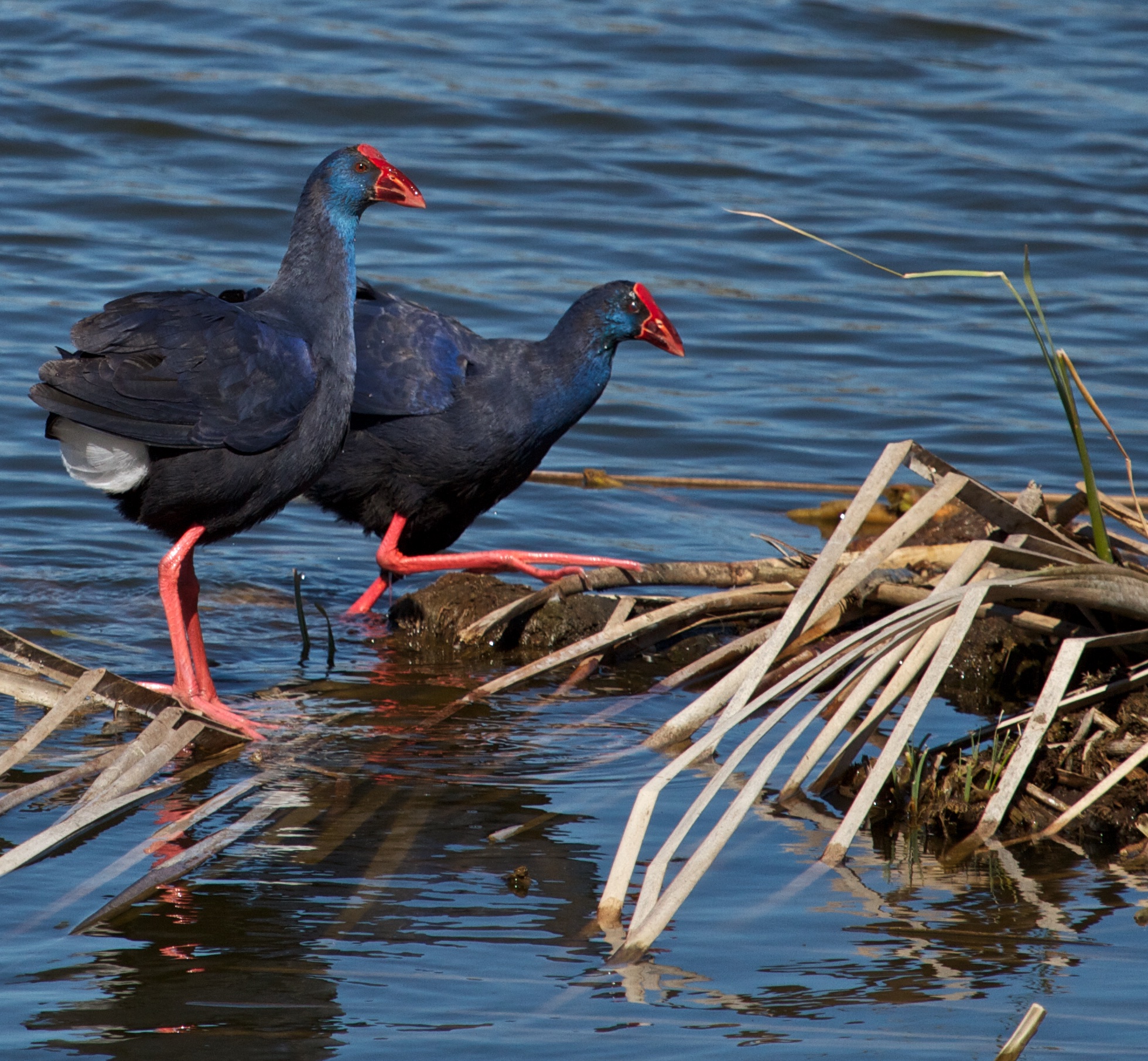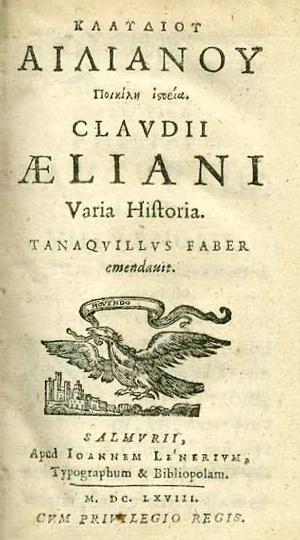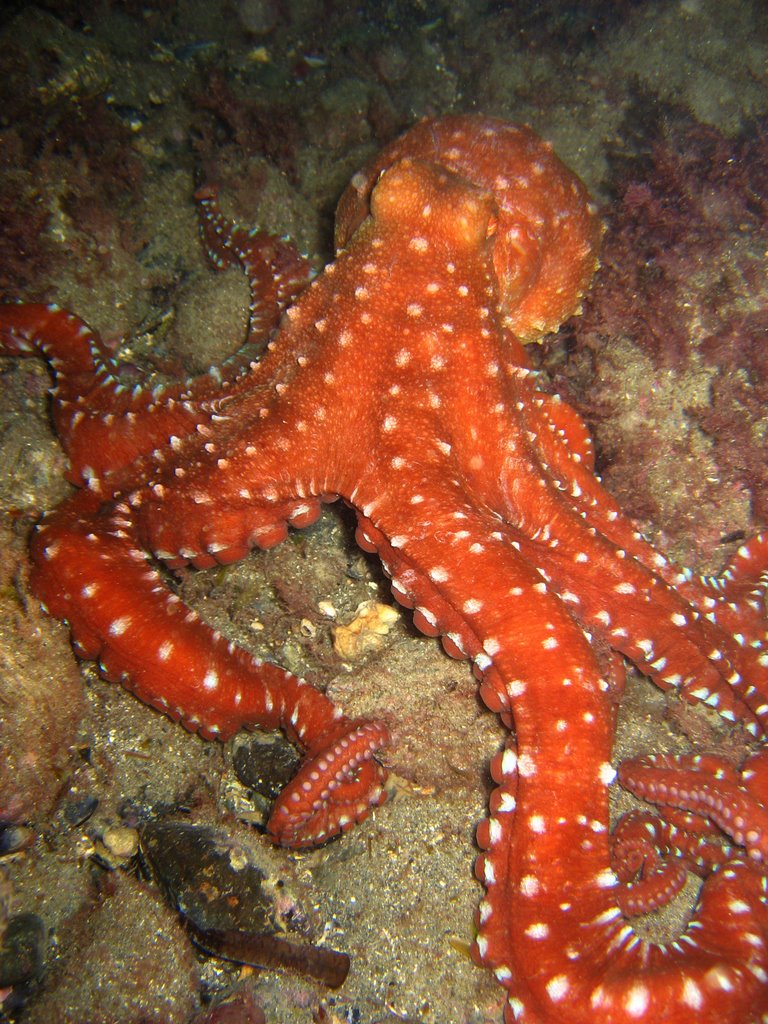|
Western Swamphen
The western swamphen (known as Purple Swamphen) (''Porphyrio porphyrio'') is a swamphen in the rail family Rallidae, one of the six species of purple swamphen. From the French name ''talève sultane'', it is also known as the sultana bird. This chicken-sized bird, with its large feet, bright plumage and red bill and frontal shield is easily recognisable in its native range. It used to be considered the nominate subspecies of the purple swamphen, but is now recognised as a separate species. The western swamphen is found in wetlands in Spain (where the largest population lives), India, Portugal, southeastern France, Italy (Sardinia, and Sicily) and northwestern Africa (Morocco, Algeria and Tunisia). Behaviour The species makes loud, quick, bleating and hooting calls which are hardly bird-like in tone. It is particularly noisy during the breeding season. Despite being clumsy in flight, it can fly long distances and is a good swimmer, especially for a bird without webbed feet. Breed ... [...More Info...] [...Related Items...] OR: [Wikipedia] [Google] [Baidu] |
Mallorca
Mallorca, or Majorca, is the largest island in the Balearic Islands, which are part of Spain and located in the Mediterranean. The capital of the island, Palma, is also the capital of the autonomous community of the Balearic Islands. The Balearic Islands have been an autonomous region of Spain since 1983. There are two small islands off the coast of Mallorca: Cabrera (southeast of Palma) and Dragonera (west of Palma). The anthem of Mallorca is " La Balanguera". Like the other Balearic Islands of Menorca, Ibiza, and Formentera, the island is an extremely popular holiday destination, particularly for tourists from the Netherlands, Germany and the United Kingdom. The international airport, Palma de Mallorca Airport, is one of the busiest in Spain; it was used by 28 million passengers in 2017, with use increasing every year since 2012. Etymology The name derives from Classical Latin ''insula maior'', "larger island". Later, in Medieval Latin, this became ''Maiorca'', "the larg ... [...More Info...] [...Related Items...] OR: [Wikipedia] [Google] [Baidu] |
Invertebrates
Invertebrates are a paraphyletic group of animals that neither possess nor develop a vertebral column (commonly known as a ''backbone'' or ''spine''), derived from the notochord. This is a grouping including all animals apart from the chordate subphylum Vertebrata. Familiar examples of invertebrates include arthropods, mollusks, annelids, echinoderms and cnidarians. The majority of animal species are invertebrates; one estimate puts the figure at 97%. Many invertebrate taxa have a greater number and variety of species than the entire subphylum of Vertebrata. Invertebrates vary widely in size, from 50 μm (0.002 in) rotifers to the 9–10 m (30–33 ft) colossal squid. Some so-called invertebrates, such as the Tunicata and Cephalochordata, are more closely related to vertebrates than to other invertebrates. This makes the invertebrates paraphyletic, so the term has little meaning in taxonomy. Etymology The word "invertebrate" comes from the Latin word ''vertebra'', whi ... [...More Info...] [...Related Items...] OR: [Wikipedia] [Google] [Baidu] |
Fresco
Fresco (plural ''frescos'' or ''frescoes'') is a technique of mural painting executed upon freshly laid ("wet") lime plaster. Water is used as the vehicle for the dry-powder pigment to merge with the plaster, and with the setting of the plaster, the painting becomes an integral part of the wall. The word ''fresco'' ( it, affresco) is derived from the Italian adjective ''fresco'' meaning "fresh", and may thus be contrasted with fresco-secco or secco mural painting techniques, which are applied to dried plaster, to supplement painting in fresco. The fresco technique has been employed since antiquity and is closely associated with Italian Renaissance painting. The word ''fresco'' is commonly and inaccurately used in English to refer to any wall painting regardless of the plaster technology or binding medium. This, in part, contributes to a misconception that the most geographically and temporally common wall painting technology was the painting into wet lime plaster. Even in appar ... [...More Info...] [...Related Items...] OR: [Wikipedia] [Google] [Baidu] |
Roman Mosaic
A Roman mosaic is a mosaic made during the Roman period, throughout the Roman Republic and later Empire. Mosaics were used in a variety of private and public buildings, on both floors and walls, though they competed with cheaper frescos for the latter. They were highly influenced by earlier and contemporary Hellenistic Greek mosaics, and often included famous figures from history and mythology, such as Alexander the Great in the Alexander Mosaic. A large proportion of the surviving examples of wall mosaics come from Italian sites such as Pompeii and Herculaneum. Otherwise, floor mosaics are far more likely to have survived, with many coming from the fringes of the Roman Empire. The Bardo National Museum in Tunis has an especially large collection from large villas in modern Tunisia. Development Perhaps the earliest examples of Greco-Roman mosaic floors date to the late Republican period (2nd century BC) and are from Delos, Greece. Witts claims that tessellated pavem ... [...More Info...] [...Related Items...] OR: [Wikipedia] [Google] [Baidu] |
Grey-headed Swamphen
The grey-headed swamphen (''Porphyrio poliocephalus'') is a species of swamphen occurring from the Middle East and the Indian subcontinent to southern China and northern Thailand. It used to be considered a subspecies of the purple swamphen, but was elevated to full species status in 2015; today the purple swamphen is considered a superspecies and each of its six subspecies groups are designated full species. The male has an elaborate courtship display, holding water weeds in his bill and bowing to the female with loud chuckles. The grey-headed swamphen was introduced to North America in the late 1990s due to avicultural escapes in the Pembroke Pines, Florida area. State wildlife biologists attempted to eradicate the birds, but they have multiplied and can now be found in many areas of southern Florida. Ornithological authorities consider it likely that the swamphen will become an established part of Florida's avifauna.Pranty, Bill, Kim Schnitzius, Kevin Schnitzius, and Helen ... [...More Info...] [...Related Items...] OR: [Wikipedia] [Google] [Baidu] |
Balearic Islands
The Balearic Islands ( es, Islas Baleares ; or ca, Illes Balears ) are an archipelago in the Balearic Sea, near the eastern coast of the Iberian Peninsula. The archipelago is an autonomous community and a province of Spain; its capital is Palma. The 2007 Statute of Autonomy designates the Balearic Islands as one of the ''nationalities'' of Spain. The official languages of the Balearic Islands are Catalan and Spanish. Its four largest islands are Mallorca, Menorca, Ibiza, and Formentera. Many of its minor islands and islets are close to the larger islands, including Cabrera, Dragonera, and S'Espalmador. The islands have a Mediterranean climate, and the four major islands are all popular tourist destinations. Ibiza, in particular, is known as an international party destination, attracting many of the world's most popular DJs to its nightclubs. The islands' culture and cuisine are similar to those of the rest of Spain but have their own distinctive features. Etymology ... [...More Info...] [...Related Items...] OR: [Wikipedia] [Google] [Baidu] |
Athenaeus
Athenaeus of Naucratis (; grc, Ἀθήναιος ὁ Nαυκρατίτης or Nαυκράτιος, ''Athēnaios Naukratitēs'' or ''Naukratios''; la, Athenaeus Naucratita) was a Greek rhetorician and grammarian, flourishing about the end of the 2nd and beginning of the 3rd century AD. The ''Suda'' says only that he lived in the times of Marcus Aurelius, but the contempt with which he speaks of Commodus, who died in 192, shows that he survived that emperor. He was a contemporary of Adrantus. Several of his publications are lost, but the fifteen-volume '' Deipnosophistae'' mostly survives. Publications Athenaeus himself states that he was the author of a treatise on the ''thratta'', a kind of fish mentioned by Archippus and other comic poets, and of a history of the Syrian kings. Both works are lost. The ''Deipnosophistae'' The '' Deipnosophistae'', which means "dinner-table philosophers", survives in fifteen books. The first two books, and parts of the third, eleventh and ... [...More Info...] [...Related Items...] OR: [Wikipedia] [Google] [Baidu] |
Claudius Aelianus
Claudius Aelianus ( grc, Κλαύδιος Αἰλιανός, Greek transliteration ''Kláudios Ailianós''; c. 175c. 235 AD), commonly Aelian (), born at Praeneste, was a Roman author and teacher of rhetoric who flourished under Septimius Severus and probably outlived Elagabalus, who died in 222. He spoke Greek so fluently that he was called "honey-tongued" ( ); Roman-born, he preferred Greek authors, and wrote in a slightly archaizing Greek himself. This cites: * ''Editio princeps'' of complete works by Gesner, 1556; Hercher, 1864-1866. * English translation of the ''Various History'' only by Fleming, 1576, and Stanley, 1665 * Translation of the ''Letters'' by Quillard (French), 1895 His two chief works are valuable for the numerous quotations from the works of earlier authors, which are otherwise lost, and for the surprising lore, which offers unexpected glimpses into the Greco-Roman world-view. It is also the only Greco-Roman work to mention Gilgamesh. ''De Natura Animalium'' ... [...More Info...] [...Related Items...] OR: [Wikipedia] [Google] [Baidu] |
Pliny The Elder
Gaius Plinius Secundus (AD 23/2479), called Pliny the Elder (), was a Roman author, naturalist and natural philosopher, and naval and army commander of the early Roman Empire, and a friend of the emperor Vespasian. He wrote the encyclopedic ''Naturalis Historia'' (''Natural History''), which became an editorial model for encyclopedias. He spent most of his spare time studying, writing, and investigating natural and geographic phenomena in the field. His nephew, Pliny the Younger, wrote of him in a letter to the historian Tacitus: Among Pliny's greatest works was the twenty-volume work ''Bella Germaniae'' ("The History of the German Wars"), which is no longer extant. ''Bella Germaniae'', which began where Aufidius Bassus' ''Libri Belli Germanici'' ("The War with the Germans") left off, was used as a source by other prominent Roman historians, including Plutarch, Tacitus and Suetonius. Tacitus—who many scholars agree had never travelled in Germania—used ''Bella Germani ... [...More Info...] [...Related Items...] OR: [Wikipedia] [Google] [Baidu] |
Aristophanes
Aristophanes (; grc, Ἀριστοφάνης, ; c. 446 – c. 386 BC), son of Philippus, of the deme In Ancient Greece, a deme or ( grc, δῆμος, plural: demoi, δημοι) was a suburb or a subdivision of Athens and other city-states. Demes as simple subdivisions of land in the countryside seem to have existed in the 6th century BC and ear ... Kydathenaion ( la, Cydathenaeum), was a comedy, comic playwright or comedy-writer of Classical Athens, ancient Athens and a poet of Ancient Greek comedy, Old Attic Comedy. Eleven of his forty plays survive virtually complete. These provide the most valuable examples of a genre of comic drama known as Ancient Greek comedy, Old Comedy and are used to define it, along with fragments from dozens of lost plays by Aristophanes and his contemporaries. Also known as "The Father of Comedy" and "the Prince of Ancient Comedy", Aristophanes has been said to recreate the life of ancient Athens more convincingly than any other author. His pow ... [...More Info...] [...Related Items...] OR: [Wikipedia] [Google] [Baidu] |
History Of Animals
''History of Animals'' ( grc-gre, Τῶν περὶ τὰ ζῷα ἱστοριῶν, ''Ton peri ta zoia historion'', "Inquiries on Animals"; la, Historia Animalium, "History of Animals") is one of the major texts on biology by the ancient Greek philosopher Aristotle, who had studied at Plato's Academy in Athens. It was written in the fourth century BC; Aristotle died in 322 BC. Generally seen as a pioneering work of zoology, Aristotle frames his text by explaining that he is investigating the ''what'' (the existing facts about animals) prior to establishing the ''why'' (the causes of these characteristics). The book is thus an attempt to apply philosophy to part of the natural world. Throughout the work, Aristotle seeks to identify differences, both between individuals and between groups. A group is established when it is seen that all members have the same set of distinguishing features; for example, that all birds have feathers, wings, and beaks. This relationship between ... [...More Info...] [...Related Items...] OR: [Wikipedia] [Google] [Baidu] |
Aristotle
Aristotle (; grc-gre, Ἀριστοτέλης ''Aristotélēs'', ; 384–322 BC) was a Greek philosopher and polymath during the Classical period in Ancient Greece. Taught by Plato, he was the founder of the Peripatetic school of philosophy within the Lyceum and the wider Aristotelian tradition. His writings cover many subjects including physics, biology, zoology, metaphysics, logic, ethics, aesthetics, poetry, theatre, music, rhetoric, psychology, linguistics, economics, politics, meteorology, geology, and government. Aristotle provided a complex synthesis of the various philosophies existing prior to him. It was above all from his teachings that the West inherited its intellectual lexicon, as well as problems and methods of inquiry. As a result, his philosophy has exerted a unique influence on almost every form of knowledge in the West and it continues to be a subject of contemporary philosophical discussion. Little is known about his life. Aristotle was born in th ... [...More Info...] [...Related Items...] OR: [Wikipedia] [Google] [Baidu] |


.jpg)
.jpg)





